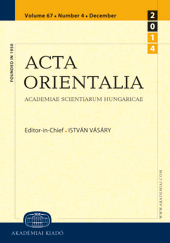The exchange rates of the Hungarian and Turkish ducats in the mid-16th century
The exchange rates of the Hungarian and Turkish ducats in the mid-16th century
Author(s): János BuzaSubject(s): Economic history, 16th Century, The Ottoman Empire
Published by: Akadémiai Kiadó
Keywords: monetary history; exchange rates of the Hungarian; Turkish and Venetian ducats; coinage; numismatics;
Summary/Abstract: During the Ottoman military operations in 1543, a large quantity of Turkish ducats arrived in Hungary. The valuable gold coins found their ways into Lower Austria too. King Ferdinand I of Habsburg established their exchange rate 7% lower than that of the Hungarian ducats. On the other hand, the Ottoman authorities in Buda set the exchange rate of the Hungarian ducat at a level that was approximately 6% lower than the exchange rate of the Turkish ducat. The fact that the exchange rates in the markets differed from those fixed in the respective orders of the states indicated that the two opposing great powers were not only battling in the field, but were also engaged in an economic struggle. The author, apart from the contemporary Venetian exchange rates, used several other pieces of evidence concerning money circulation in remote areas of Europe.
Journal: Acta Orientalia Academiae Scientiarum Hungaricae
- Issue Year: 60/2007
- Issue No: 1
- Page Range: 33-54
- Page Count: 22
- Language: English
- Content File-PDF

